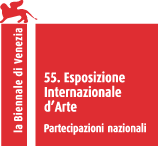a, staircase
a behavioral statement (or an unconscious protest)
year: 2013
material: HD video
time: 8min
credits: commissioned by The Japan Foundation
Director of Photography: Keiichi Negishi and Hikaru Fujii
Sound: Masato Watanabe, Kyohei Tsuchiya
Editing: Koki Tanaka
Color Correction: Kenichi Negishi
Post Audio Editing: Yui Kimijima
Camera Assistant: Kousuke Haruki, Kana Yoshida, Michiko Tsuda
Coordinators: Tae Mori, Yoko Oyamada, Miwa Kaneko, Mihoko Kobayashi, Reiko Nariyama
Project assistant: Hideki Aoyama, Takashi Fujikawa
Still Photography: Takashi Fujikawa
Location: The Japan foundation, Tokyo
Filming in cooperation with Korean Cultural Center, Korean Embassy in Japan
Equipment support: ARTISTS' GUILD
artist’s notes:
Take for example the fact that we are all inherently a complex minefield of issues. Issues peculiar to each one of us, that rarely intersect with those of anyone else. Problems are invariably accompanied by pain: pain unable to be shared with others. Emotions like sympathy and empathy, for instance, actually serve to reinforce the line between the one in pain, and the one without pain. The vector of sympathy is always directed from the one without pain, to the one feeling it. The reverse cannot be. Which is why perhaps we should explore ways of connecting other than sympathy.
Over a year has passed since the Tohoku earthquake (this text is based on an artist statement released in May 2012), yet much still goes on: rubble is still being cleared, the problems of temporary housing and the nuclear power plant remain. Since the quake a sizeable contingent of artists, architects, musicians, filmmakers and other creatives have been volunteering on the ground, or taking action that reflects their own practice. This is no temporary response, but a sustained effort. One such project will be presented at the Japanese pavilion for this year's Architecture Biennale. For the first few months after the disaster, the question asked by most Japanese artists was, what can art do when faced with an event like this? I think many are still asking themselves that question. While some take direct action, others attempt to respond indirectly by pursuing their practice in the same manner as before.
So what could I personally do? Or rather, the question for me was, what has this event brought for us? One thing is the emergence of an intense context able to be shared by the whole of society, something that has probably never existed before in Japan. Viewing Japanese society through this context, we find that casual acts on our part have a different background since that day. For example, we might occasionally take the stairs. That is, take the stairs rather than the lift or escalator. Previously we could have said we were doing so for our health perhaps, or to save electricity. But in today's Japan, the simple act of going up and down stairs can surely be read differently: as a stand against relying on electricity ie, nuclear power, even, of course, if this is not deliberate on the part of those in question. Spotting crowds of people coming down the stairs at Tokyo railway stations, it struck me that in a way they were protesting. Not behaving in a totally new way but taking a fresh look at our actions to date, identifying certain acts, and reading the background in a different way: doing so results in problems peculiar to a specific region becoming more generalized, until no one can ignore them.
アーティストノート:
例えばぼくらは自分自身の中に複雑な問題を抱えている。それは個々の固有の問題なわけだし、それが誰かの問題と交わることはあまりないだろう。問題はいつも痛みを伴い、その痛みは他者とは共有できないものだ。 例えば同情や共感は、痛みを持つ者と持たぬ者のボーダーをむしろ強化してしまう。同情のベクトルは常に痛 みを持たぬ者から持つ者へと向かっている。逆はありえない。だからぼくらは同情ではなく、別の方法でもっ て関わりを模索するべきだろう
震災から一年以上が経過したが(このテキストはアーティスト・ステイトメントとして2012年5月に発表されたものに基づいている)、いまだに瓦礫の処理や仮設住宅、原発の問題も含めて状況は続いている。震災の後、たくさんのアーティストや建築家、音楽家、映像作家などが現地でボランティアをしたり、自身の活 動を反映した行動を起こしたりしている。それは一時的な反応ではなく継続的なものだ。今年の建築ビエンナ ーレの日本館でもそうしたプロジェクトのひとつが発表される。震災後の最初の数ヶ月、多くの日本人アーテ ィストが抱いた問いは「アートはこの出来事に対してなにができるのか」であった。そしてその問いはいまも 多くのアーティストの中で問われ続けていると思う。直接的な行動を起こすものもいれば、以前と変わらぬ活動を続けることで間接的に応えようとするものもいる。
ではこのぼくには何ができるのだろうか。いや、ぼくにとっての問いはむしろ、この出来事がぼくらにもたらしたものは何かを考えることだ。そのひとつは、おそらくいままでの日本にはなかった社会的に共有されうる 強烈な文脈が生じたということだ。この文脈を通して日本社会を見るとき、ぼくらの何気ない行為は、あの日 を境に別の背景を持つことになった。例えばぼくらはときに階段を使う。エレベータやエスカレータを使わず に階段を使う。いままでならば健康のためやエコロジーのためと言うこともできただろう。でも、いまこの日本において、「ただ階段を上り下りする」という行為は別様に読み替えることができるはずだ。それはいわば 電気(=原子力発電)に頼らないという態度でもある、もちろん本人たちにはその意図がないのだとしても。 たくさんのひとが階段を下りる姿を東京の駅で見かけたとき、ぼくにはそれがある種のデモンストレーション に見えた。新しい行動を起こすのではなく、いままでのぼくらの行為を見直し、抽出し、背景を読み替えること。そうすることによって、特定の地域における特殊な問題は広く一般化され、誰も無視することができなくなるだろう。
participants (2012/10/5):
Naohisa Abe, Ning Ding, Satomi Eguchi, Yoko Fujita, Misako Futsuki, Mihoko Himeda, Rika Hirano, Mayu Honda, Teruyuki Hoshina, Nobuaki Iizawa, Yuka Imai, Masanobu Ito, Yuri Izumi, Miwa Kaneko, Yuta Kaneko, Yo Katsurayama, Mihoko Kobayashi, Tetsuya Koide, Junko Kurata, Kazunori Matsunaga, Shota Miyake, Fusako Miyamori, Kaoru Miyamoto, Juri Murakami, Yukiko Murooka, Haruka Nakajima, Tomoko Nakamura, Reiko Nariyama, Yuka Niwayama, Akihiko Noda, Kousuk Noguchi, Ayako Ochi, Tsuyako Ogushi, Makoto Ohnishi, Yuko Oku, Yukio Oshida, Kanae Rachi, Noriko Sato, Masaya Shimoyama, Rie Shoji, Keiji Shono, Masayuki Suzuki, Yuko Tachibana, Makie Tahara, Masanori Takaguchi, Mana Takatori, Hidekazu Takeda, Yasuhiro Takehara, Aya Tamura, Shin-ichi Tanaka, Maki Toshimori, Norihisa Tsukamoto, Hiroaki Uesugi, Yuuki Yamaguchi
参加者(2012/10/5):
阿部 尚久、飯澤 展明、泉 友里、伊東 正伸、今井 由華、上杉 啓明、江口 智美、大串 つやこ、大西 真、奥 裕子、忍田 幸男、越智 彩子、葛山 洋、金子 美環、金子 勇太、倉田 順子、小出 哲也、小林 美帆子、佐藤 訓子、下山 雅也、庄司 理恵、正野 圭治、鈴木 雅之、高口 真法、高鳥 まな、武田 英和、嵩原 安宏、橘 裕子、田中 伸一、田原 真己恵、田村 彩、塚本 倫久、丁 寧、歳森 真紀、中島 遥香、中村 友子、成山 玲子、庭山 由佳、野口 晃佑、野田 昭彦、姫田 美保子、平野 里佳、藤田 葉子、夫津木 美佐子、保科 輝之、本多 麻由、松永 一範、三宅 章太、宮本 薫、宮森 房子、村上 樹里、室岡 有紀子、山口 裕輝、良知 加苗







